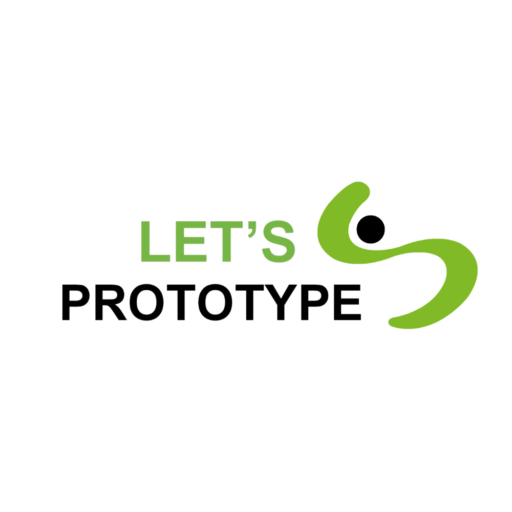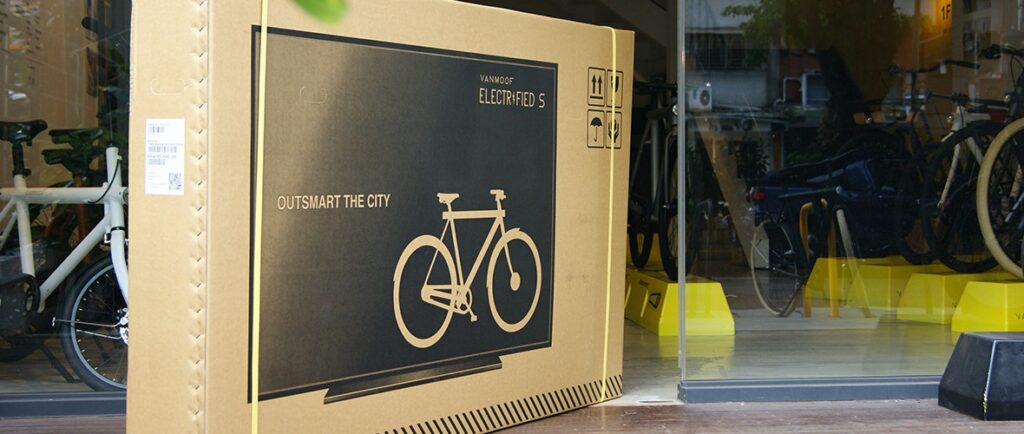Guide to Product Packaging Design. Packaging Examples.
The product packaging design is an inseparable part of the experience your future customers will have. You’re probably thinking of brands like Apple, which has successfully conveyed its values and brand essence through the materials, colors, cleanliness, and textures of its packaging.
As with product innovation itself, standing out with innovative packaging requires thoughtful planning and key decisions that must deliver distinctive value — without losing sight of the key packaging design constraints:
- Functionality
- Experience
- Sustainability
- Costs
- Regulations and Logistics
- Technology
Below, we share some criteria that can serve as a guide to help you achieve a unique packaging design for your new creations.
Guide to Designing Unique and Innovative Packaging
Functionality as a Key Criterion in Packaging Design
Overengineering is also a major pitfall in innovative packaging design. While standing out with a unique packaging design may be the goal, the guiding principle should always be the functionality of the packaging.
A functional packaging is one that, in addition to protecting the product, highlighting the brand, and conveying the company’s values, adds value by ensuring proper preservation and enhancing the future user experience of the products it contains.
For example, the design of cosmetic product packaging may differ greatly in shape and appearance from existing ones, but it must ensure airtight sealing and an opaque surface to help preserve the product.
In technology product packaging design, functionality requires offering high impact resistance due to the fragility of the contents. New trends in technology product packaging design often feature book-style boxes with magnetic lids that are easy to open, helping to prevent handling damage by the customer and, above all, reinforcing a futuristic, clean, and minimalist unboxing experience.
Other examples of functional packaging that are highly illustrative include inverted sauce bottles, where the cap serves as the base, ensuring the sauce is always ready to be dispensed.
In the food industry, sealed trays are a great example of functional packaging. In addition to serving as display units thanks to their transparent outer surface, they feature an aesthetic base that allows dishes to be served with minimal effort.
Experience as the essence of Product Packaging Design
A key challenge in product packaging design is creating a unique experience at the moment the product is received. Users increasingly value and share their opinions about this moment, which in turn plays a fundamental role in brand loyalty.
The real challenge lies in balancing packaging manufacturing costs with brand value communication, without compromising functionality or logistical efficiency.
Let’s take a look at some packaging examples that have achieved a truly unique user experience without compromising the other critical variables in the packaging creation process.
The packaging of the famous Kit Kat chocolates is a clear example. By incorporating perforated lines into the wrappers, it achieves a distinctive aesthetic while also guiding the customer on exactly where to break the chocolate for a cleaner and more ergonomic consumption experience.
The packaging increasingly used in orders from the popular affordable fashion retailer H&M never ceases to surprise us. At first glance, it appears to be a traditional cardboard box, but it features marked lines that allow users to follow intuitive steps to transform this innovative packaging into a hanger for the garments.
Another simple yet experiential packaging example comes from Apple products. Their boxes are designed to immerse users in a smooth unboxing experience that reinforces the aspirational nature of their purchase. At the same time, they focus on using designs and materials that, through touch, highlight the unique quality of the product inside. It’s rare for users to throw away Apple packaging after unboxing — the boxes are so distinctive that they become part of the cherished items stored in everyday drawers.
Sustainable Packaging Design. Ecodesign.
Designing and manufacturing sustainable packaging doesn’t have to be more expensive or negatively impact a company’s product sales model. In a society that is increasingly aware of its responsibility to protect the environment, packaging made from recyclable, recycled, and biodegradable materials—such as cardboard, plant fibers, and bioplastics— is becoming more and more common.
In sustainable packaging design decisions, factors such as the thickness or number of layers of the materials used also play a key role — a strategy commonly referred to as “overpackaging”.
One of the best-known examples of sustainable packaging is the new packaging formats for shower gels and shampoos from well-known brands. These are products that tend to build strong customer loyalty among those who value their environmental contribution, and who are therefore willing to pay for simpler packaging with more content that allows them to refill the original containers. This business model, tied to a new philosophy of sustainable packaging, can be seen in the market with brands as prominent as Garnier and L'Oréal.
Large juice packaging and production companies, given the high consumption of their products, have also turned their attention to packaging sustainability. For example, Just Water currently uses sustainable packaging consisting of a bottle made from 82% renewable materials and a sugarcane-based cap, which significantly reduces the environmental impact of packaging.
At Let’s Prototype, we’ve been closely involved with ongoing research that could represent a major step forward in innovation for sustainable packaging. It involves using seaweed—often seen as a nuisance on the shores of the world’s most popular beaches—as a valuable raw material for the production of packaging such as food containers and bottles for liquid products.
Cheap Industrial Packaging
The packaging design—just like the product design itself—must follow fundamental principles to ensure that the creative outcomes are compatible with industrial manufacturing methods, a variable that is directly linked to packaging costs.
In our experience, many packaging design agencies achieve spectacular results that capture the attention of inventors and commercial brands. However, we often receive packaging examples that would significantly impact product profit margins, or innovative packaging ideas that are extremely difficult to manufacture at scale.
To avoid these common mistakes in the creative packaging process, it is essential to seek guidance from experts who not only have the ability to design the packaging but also take responsibility for its industrialization processes.
One example of innovative and sustainable packaging that also meets industrialization requirements and low manufacturing costs is the new Coca-Cola bottle. Without abandoning its use of PET, the brand has achieved a design that minimizes plastic usage without compromising the strength of its products.
In this context, it is also worth mentioning the new sustainable packaging strategies for liquid products, such as large-format shampoos and shower gels, which minimize plastic use and overall weight without compromising protection or the preservation needs of the products.
Packaging Regulations and Logistics Requirements
Designing innovative packaging that respects the variables already discussed is no easy task. On top of the creative process and design of new packaging, one must not overlook the regulatory and logistical requirements that are imposed on it.
Depending on the product content, there are clear regulations regarding the types of materials that can or cannot be used in packaging. Likewise, current packaging standards cover labeling, the use of realistic images, and restrictions on certain inks or toxic materials that could affect the contents. These packaging regulations, both in Europe and the United States, are much stricter for health-related and food products.
From a logistics standpoint, packaging must also comply with specific standards for stacking, storage, and transportation. Logistics costs are a key variable when analyzing product profit margins. This is why using the minimum possible space—through geometries that enable safe and efficient stacking—plays a crucial role in innovative packaging design.
Of course, the safety and preservation of products during transportation largely depend on the packaging design. Creativity knows no limits. A clear example of innovative packaging with a major logistical impact was the solution developed by high-end bicycle brand VanMoof.
High-end bicycles typically sell for over $1,000. Since the company’s main sales channel was its website, they had to partner with logistics providers across a wide range of geographic locations. This made it nearly impossible to ensure consistent care and handling of their products during shipping, posing a major challenge in protecting their bicycles throughout the logistics process.
After a high number of incidents upon delivery, they decided to change the visual appearance of their packaging, displaying the bicycle prominently within the image of a flat-screen TV. This packaging innovation—which likely required minimal effort and no structural changes—led to a significant reduction in incidents. Logistics operators assumed the contents were electronic devices with screens and, naturally, began handling the packages with greater care.
Innovation and Design of Technological Packaging
Creating experiences through product packaging design fully embraces the latest technologies that connect the physical and digital worlds. Now more than ever, the physical and online experiences of a product are intertwined — and technology packaging is precisely the point of connection between these two realms.
The most commonly used technologies in technology packaging are: QR codes, NFC, and augmented reality. The common thread among these technologies is their ability to deliver a unique digital experience through an electronic device that complements the unboxing process.
QR Code Packaging: The code can be scanned using a smartphone or tablet camera to access multimedia instructions, user guides, product usage recommendations, and even interact with the brand’s story.
NFC Packaging: The integration of Near Field Communication technologies in packaging offers the same experience as QR codes, without the need to scan or use the device’s camera. Additionally, this technology enables other functions, such as activating products when they come into proximity with their NFC-enabled label.
Augmented Reality Packaging: This allows for unique experiences over elements included in the packaging design. When viewed through a camera, users can see movements and effects over parts of the technology packaging design. In addition to creating a wow effect, augmented reality packaging can serve educational and instructional purposes related to the product’s use.
At Let’s Prototype, we don’t just design products with high chances of success — we can support you throughout the entire process, including the packaging design for your project, carefully balancing the key variables that influence it.

